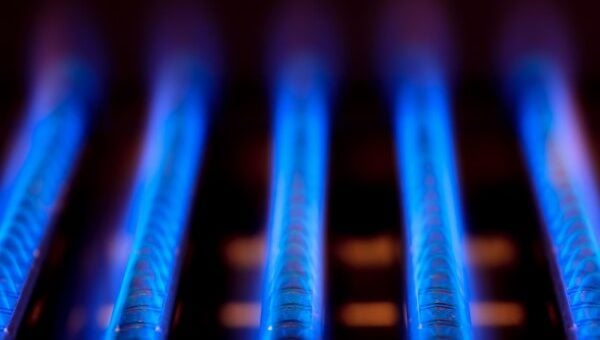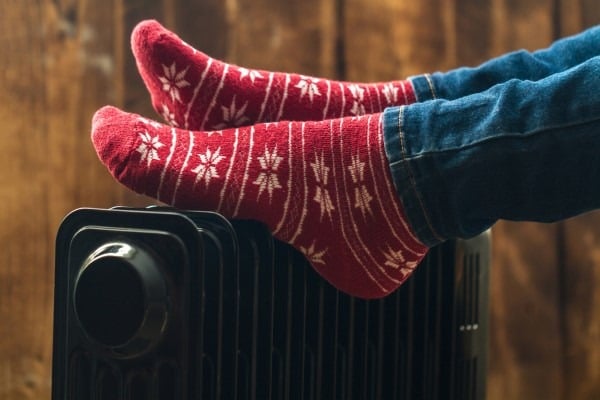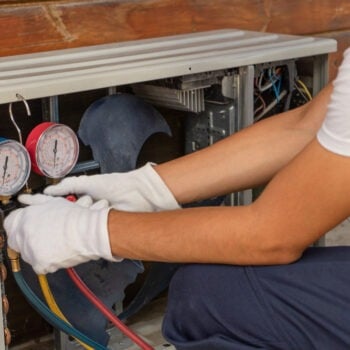
- On September 29, 2022
(Updated Feb. 2025)
As the chilly month’s approach, you’re certainly glad to have a good, reliable source of heat in your home. Do you know what type of device heats your home, though?
Modern homes come equipped with heaters and furnaces to keep the interior warm, and while they both serve the same function, they are, in fact, two different things. Depending on which one you have in your home, you may need to take different steps to acquire either heater or furnace maintenance over the years to ensure your home stays warm and cozy all winter long.
What’s the Difference?
In order to fully understand the difference between a heater and a furnace, you first must understand that the word “heater” is a very broad term that’s used to describe a wide array of devices that produce and emanate heat. Some of these include:
- Space heaters
- Boilers
- Fire
- Hand-warmers that fit inside pockets
- Electric blankets
In short, anything that’s capable of producing and distributing heat to a controlled and specified area is considered a heater. The central heater in your house is the appliance that’s responsible for moving warm air throughout your home to ensure that all rooms are evenly heated and comfortable.
The furnace is what creates the heat that’s then distributed. Without your furnace, your heater would still be moving air around your house, but it wouldn’t be warm air. It is a large box that’s located somewhere in your home and uses either oil or gas combustion to heat the air and water that you enjoy on a daily basis.
A furnace is part of your heating system, often working alongside both an HVAC and a boiler, and can, in many ways, be considered a heater itself. Simply put, all furnaces may be considered a heater, but not all heaters are furnaces.

How They Work Together
Both your HVAC system and your furnace have to work together to produce and distribute warm air throughout your home. The process begins in the furnace, which begins heating cool air pulled into it by a fan. The manner of heating depends entirely on the type of furnace you have.
The vast majority of modern homes contain forced-air heating systems, which use a fan and a series of ducts to retrieve cool air, push it through the furnace’s filter, into the blower to be heated, and then back through the ducts to reach vents throughout the house.
The furnace, when turned on, begins to consume the fuel that powers it in order to heat the air. However, it is not responsible for moving the air throughout the house, just heating it. The heat pump itself is the “heater” part of the equation. Its main job is to move that hot air from the furnace to the rest of the house, where it can be enjoyed in
every room with a vent. Without your heating system – a huge part of your HVAC system – circulation would not be possible in many modern constructions with forced-air systems.
Why Does It Matter?
Establishing the difference between these two systems in your home is the first step to ensuring that your system is healthy and able to perform the job it’s meant for. You’ll know to invest in the proper furnace and heater maintenance rather than just one or the other and can better keep an eye out for potential difficulties in both systems.
In short, it’s an excellent basis for understanding some of the common problems your furnace and heater might face, and which one to order maintenance or repairs on when you’re encountering those difficulties.
For example, if you notice that air is coming through your vents, but it’s not particularly warm, this is likely a problem with your furnace, not your heater. The heating system is continuing to distribute air throughout the house, but the furnace isn’t warming it beforehand. Alternately, if your vents aren’t producing air, it’s more likely a problem with your heating system, and you can contact a professional repair team accordingly.
Maintenance Differences
Another big difference between these two appliances is how they’re maintained throughout the year. Maintenance is imperative to the safe and effective operations of both heaters and furnaces of all types.
Taking care of both systems and seeing to their individual needs is a step every homeowner should take throughout every season in order to prevent a range of potentially hazardous problems. Of course, each of these systems is different and will require different steps.
Heater maintenance is fairly straightforward. Generally, you’ll need to:
- Change out your air filters regularly – every three months, at least
- Keep the area around your system free and clear of dirt and debris
- Clean your evaporator and condenser coils
- Clean vents and ensure they’re unobstructed
Furnaces require a little TLC to keep them running correctly, too, especially since they use gas or oil to get the job done. Some tasks you should perform to keep your furnace in good running order are:
- Change your air filter
- Clean the combustion chamber
- Check pipes for leaks
- Adjust and test the burner
Central heating malfunctions that occur due to improper maintenance and cleaning are responsible for as many as 12% of house fires each year.
Performing the right steps to maintain and clean your systems ensures you’re not accumulating flammable grime in your vents, encountering gas leaks, or inadvertently contributing to a higher risk of a house fire occurring in your home. Caring for your heater and furnace properly is imperative to staying safe while keeping warm during the winter months.
While you can handle a handful of maintenance tasks on your own, it’s always worth your while to schedule an annual inspection with professionals throughout the year, especially before you kick on your heater for the winter.
The pros have the training needed to spot discrete issues that you might otherwise miss, and the skills and tools to perform repairs quickly and correctly. It’s a small annual investment that repays you with a smooth-running heater, a clean furnace, and peace of mind.
Tune Up for Smoother Results
Just like both heaters and furnaces require maintenance, both of these crucial parts of your HVAC system can benefit from a regular tune-up as well. Performing a furnace tune-up can be as simple as oiling up a few parts and ensuring fuel is running smoothly or as complex as replacing entire parts for newer, more efficient versions.
The same can be said for your heater. Making these changes can seem pricey, but running regular tune-ups also ensures you’re keeping your system as efficient as possible, which in turn makes the upgrades pay for themselves in terms of monthly energy expenses.
Learn More
Learn more about the differences that distinguish a furnace from a heater and how to maintain and care for both by contacting the professionals at Howard Air & Plumbing. In business since 1977, Howard Air & Plumbing has the know-how and experience needed to ensure your system is on track in every way.
These professionals have distinguished themselves over the years by providing customers with superior customer care and services and received an A+ rating and Torch Award from the Better Business Bureau in 2017. Schedule an inspection or consultation today to get the best results you can possibly find.
















0 Comments